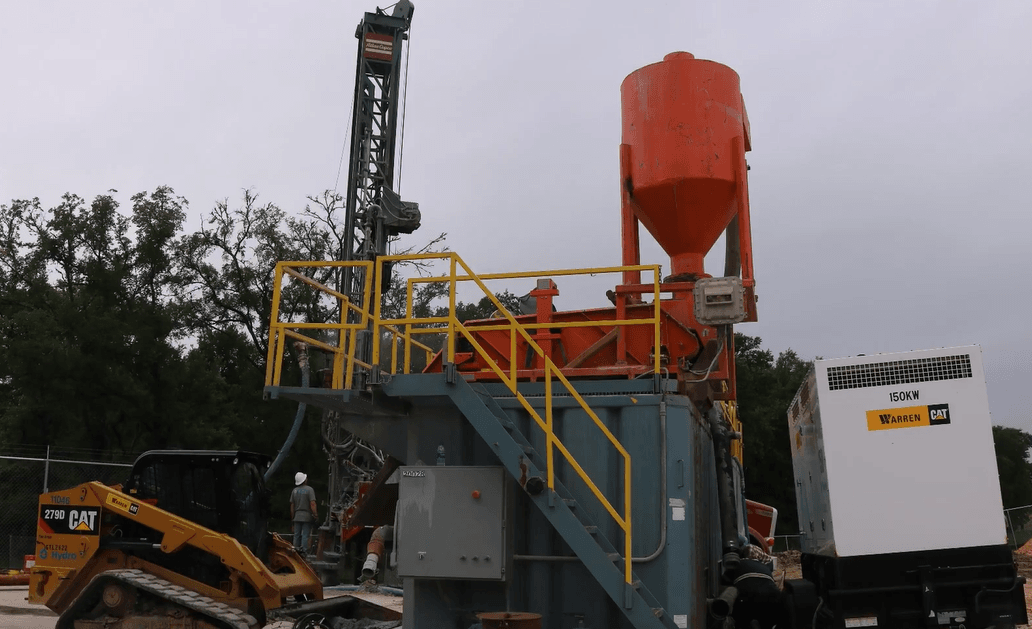
Buda Begins Drilling Its Aquifer Storage And Recovery Well
A few years ago, the City of Buda started exploring Aquifer Storage Recovery (ASR) as a viable water storage option.
A feasibility study was completed in 2016 and the Buda City Council later approved the drilling of an ASR pilot well near the Garlic Creek Booster Station and Well No. 5. Drilling of the well started this week.
“The City is just starting its Aquifer Storage and Recovery well. Aquifer Storage and Recovery is where you store water from one source into a different aquifer formation,” said Water Resource Coordinator Blake Neffendorf. For this particular well, we are going to take water from Well No. 5 which is an Edwards Aquifer and we are going to store it in the Trinity Aquifer which is below.”
The concept behind ASR is simple.
“The Trinity Aquifer here in Buda does not move as much as the Edwards Aquifer. The water stays in place. Once we inject water down into the aquifer it will stay in place and create a storage bubble which we can then utilize during summer months when our demand is really high, or if we go into a long-term drought. Then if the production in the Edwards Aquifer is cut back or curtailed, we can rely on water that we stored in excess times and then we can utilize that for the benefit of the City.”
The ASR Pilot Well will be completed in different phases. Drilling will be finished in May and the overall project will take about a year.
“Once everything is completed with the site, we have all the piping completed with Well No. 5 over to the new ASR well, and the pump installed, then the sampling process will begin, the injection process. We will inject a particular amount of water in the Edwards Aquifer into the ASR well. Then we will immediately pull that back out and take samples and test the water quality to see what types of results we’re getting back from that first initial extraction. After that is complete we will go into a larger phase and pump in several more million gallons of water into the well, let it sit for a week or so, and then pull it back out and do the same thing and test and make sure we are getting good water quality. Once we get all of our results back, the well has been completed, and we’ve done all of our samplings, and we’ve proven that the water quality is safe whenever it is mixed, then TCEQ (Texas Commission on Environmental Quality) will give us final approval. Then we can actually have this as a source that will go into our infrastructure and will go back in here to our Garlic Creek Booster Station.”
Currently, ASR is successfully being used in San Antonio, El Paso, and Kerrville.
“Utilizing Aquifer Storage and Recovery is a little bit different than having the storage in a lake. We don’t have to worry about evaporation losses from the Texas heat. Aquifer Storage and Recovery allows the City to be more resilient and it allows us some flexibility on our water supply. So having the ability to store excess water during plentiful times for use when we all know the next drought is going to come is a big benefit for us to the City.”






